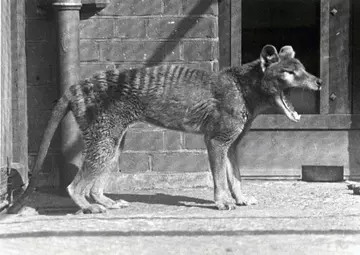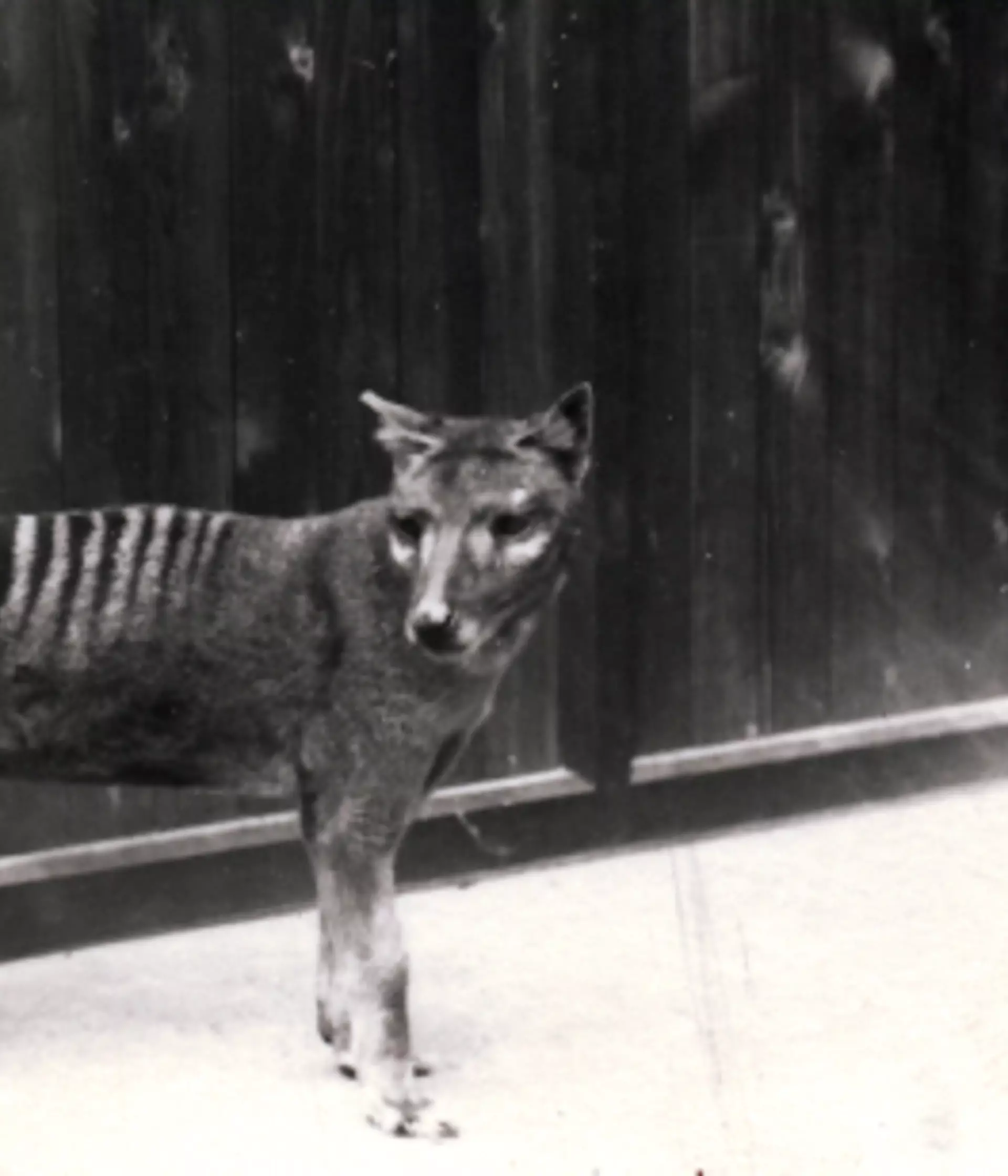
This month’s blog focuses on the thylacine – which became extinct 80 years ago in 1936.
Thylacinus cynocephalus, or as it was more commonly referred to – the Tasmanian Tiger, or sometimes the Tasmanian Wolf; was the “largest marsupial carnivore to have existed into modern times”.
Earliest sightings
There were accounts by sailors of a tiger-like creature inhabiting Tasmania as early as the 17th century, but one of the first detailed descriptions was in the Sydney Gazette in 1805. It talks of an animal which is like a “hyena, at the same time strongly reminding the observer of the appearance of a low wolf dog”.
The gentleman who found this animal preserved its parts for scientific study – and there was great interest in the study of this ‘new species’, particularly in Europe. These thylacine specimens were written about in places such as the Transactions of the Linnaean Society and piqued the interest of figures of the time such as Sir Joseph Banks.

Thylacines at ZSL
The last thylacine at London Zoo, a female, died on the 9 August 1931, and was the last to be displayed outside of Australia. The last thylacine in captivity died in Hobart Zoo on 7 September 1936. The species is now considered to be extinct, but some material has been written by people who claim to have seen them in the wild in Tasmania.
To find out more about the Library, and our online catalogue, see here.
Further reading:
Thylacine: the tragic tale of the Tasmanian Tiger – David Owen, Baltimore: John Hopkins University Press, (2003)
The Tasmanian Tiger: extinct or extant? – ed. Rebecca Lang, Strange Nation Publishing, (2014)
Tasmanian Tiger: alive and well – ed. Ned Terry, Publ. by Edward Vincent Terry, (2005)
The International Thylacine Database – ed. Stephen R Sleightholme & Nicholas P Ayliffe
Sadly illustrations sadly play an important role in understanding extinct species, as physical evidence is often sparse and incomplete. These illustrations help us understand the life and behaviour of iconic extinct species like the dodo and Tasmanian tiger, whilst informing our conservation of some of the most endangered species on earth today.
